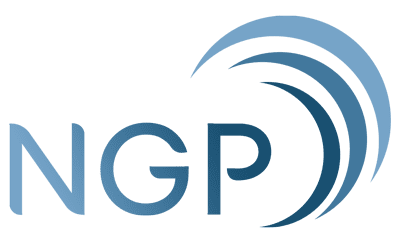Everyone loves a good story. From conversations (or chika) with our friends about what we’ve been up to recently to long-awaited sequels of movies, stories help us understand experiences we may or may not be familiar with; explore possibilities and ideas; and relate on a deeper level with other people.
You might then have also seen different ways stories are used in digital marketing and public relations, whether about people, or the brand or organization itself.
With how often they’re used, stories—and storytelling—also plays several roles in PR that are worth exploring.
Stories appeal to us in a way facts can’t.
A message becomes much more striking to us when told through a story. It’s why a lot of short stories taught during one’s childhood usually have moral lessons.
This is also especially true if the story is nonfiction. For instance, while news reports presenting statistics can convey the seriousness of an ongoing crisis, an anecdote describing the struggles of someone actually involved, appealing to our empathy, makes us actually think about the implications of the event for those affected.
As a matter of fact, different studies from Psychology Today reveal that anecdotes are considered more impactful and receive more respect compared to ideas and arguments supported solely by facts and statistics. In one of these studies, they found that in YouTube videos regarding a polarizing debate, where each side and video use different ways to argue their points, comments are more positive and sympathetic on the videos where anecdotes and experiences were used. Kubin and others suggest that personal experiences can’t be doubted, while it’s more complicated when it comes to facts.
Consider Dove’s Real Beauty campaigns, such as the #MyBeautyMySay global campaign. It features women of different body types, hair types, and ethnicities, among several others, telling stories about the ways their beauty was used against them and how they decided not to be held back by these. In the Philippines, the spinoff campaign #MyHairMySay garnered massive support. The main campaign was considered successful in starting a discussion on women’s beauty standards and resulted in increased sales for Dove SKUs, showing the power of relatability and storytelling.
Storytelling in PR builds trust.
When your narrative or story is picked up and run by media outlets and/or content creators as earned media, it’s likely that this narrative would help build trust and third-party validation; a PR story is not meant to sell a product or a service to its audience, often only meant to share a story or something relevant and interesting so they would not be caught off guard by a sales link somewhere in the story.
When this interest is gained (which is, as we’ve established, easier when we tell stories), this trust and interest can compel your audience to share your story. As your initial audience would be vouching for your story and your brand, others would then be more likely to trust your brand.
Stories also humanize your brand.
Stories help us get to know people better, often through how relatable they are, giving us an idea of who they are as a person, maybe even helping us feel closer to them. Something similar happens when storytelling is used in PR.
Your brand has its own library of stories you can tell, from its birth to its current activities, and telling some of these stories can help you humanize your brand to your audience and make it relatable, likely reminding them about the ‘human’ factor of your brand. When something is more familiar, people are more likely to trust it.
For example, following the issue about the Ethylene Oxide content (or lack of) of some Lucky Me! items and the clarification that they’re safe to eat, as one of its efforts to regain consumer trust, the brand released the Sarap ng Walang Iwanan ad, showing several scenes of how the instant noodles have always been a staple snack for Filipinos of different ages. It’s creatively told and narrated from the noodles’ perspective, as if it’s reminiscing about its friendship with the ad’s audience. With the snack and, by extension, the brand framed as a close companion, it reminds its audience that the brand can still be trusted. It ultimately humanizes the brand.
Storytelling also makes your brand more memorable.
Remember the Kwentong Jollibee campaign? The series of short films that illustrate different forms of love—from unrequited love to familial love—some of which had gone viral on social media a few years ago? Remember how these have made us shed tears?
How about the old yet unforgettable Fita Sports Car commercial, where a man’s generosity in giving half a Fita cracker to an old lady is rewarded by half a red sports car suddenly falling from the sky right in front of him? Have you seen the unexpected and still comical sequels years later?
These are only two examples of ways how storytelling makes a brand memorable. These tear-jerkers and quick comedies are more likely to leave a lasting impression compared to, say, an ad only featuring the main aspects of a product, and they did; these stories did have people talking about them for days after they were released. They might have even seen their local Jollibee branch as a place where fateful meetings or heartwarming events can happen due to these short films, or their pack of crackers as one to share with others.
As you can see, storytelling provides us with creative avenues to convey our message and connect with our audience in intimate, personal ways. Stories make people and brands appear more human, three-dimensional, the kind we’d find more approachable. Storytelling has an important, indisputable role in PR. Maximize it for your brand today!
Stories, however, are sometimes not easy to tell, so why not have a PR agency help you in this process? NGP-IMC can help you share these stories, reach your audience, and reap the benefits of storytelling in PR. Contact us today!
Jossaine Nunez is a freelance article writer, blogger, and SEO-driven maven. While her true passion lies in writing fiction, her love for storytelling extends to helping brands convey their message in ways that are both engaging and helpful for attaining their business goals.
Jossaine’s interests in writing particularly about people, for people – which translates to brand audience engagement – stems from her experience as the Editor-In-Chief of Siliman University’s The Weekly Silimanian, which published slices of life and educational pieces surrounding university life. Her piece, A Review of Leoncio Deriada’s People on Guerrero Street, published in the Silliman Journal on discussions and investigations in the humanities and sciences, earmarks her foray into the world of writing about, and writing for, humans that make the world go round.


